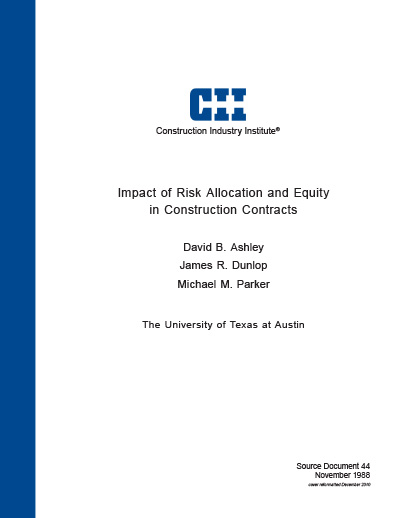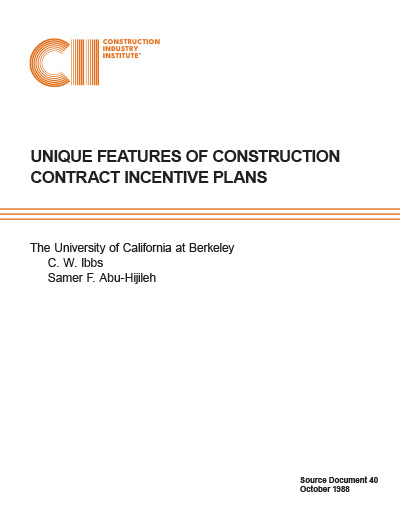
Contract Risk Allocation and Cost Effectiveness
Risk allocation in construction contracts has been the subject of considerable debate in the construction industry for many years. Careful attention to the design of contracts was recommended by The Business Roundtable Construction Industry Cost Effectiveness (CICE) Project. (CICE Report A-7, 1982) The Construction Industry Institute (CII) also identified risk allocation as influential in project success and recommended a balanced approach. (CII Publication 5-1, 1986) Nonetheless, many owners and contractors resist modification to their normal practices, unless forced to do so in specific cases by marketplace and competitive pressures.
This publication presents results of a study sponsored by the CII Contracts Task Force to evaluate the risk allocation practices and experience of CII members over a range of approaches. The primary objectives were to identify inequities and determine their impact on project performance and on owner-contractor relationships. The study focuses on fixed-price contracts, which are the most problematic.
Methodology for the study involved selection of specific clauses, completion of a questionnaire, and follow-up discussions in group interview sessions. Thirty-five CII member companies, evenly distributed between owners and contractors, responded to the questionnaire and provided 45 experienced contracts and project management personnel for the group interviews. Data was analyzed from both qualitative and quantitative perspectives.
The following aspects of contract risk allocation are addressed in this publication:
- Indemnity
- Consequential damages
- Differing conditions
- Delay
These aspects are examined relative to a number of research hypotheses, then each is discussed in greater depth.
Areas of future research suggested by this study include:
- In-depth examination of the contractor-subcontractor contractual arrangements on project cost effectiveness and working relations
- Identification of mechanisms and processes used to obtain owner and contractor objectives in claims management and analysis
Details of the study, including details of methodology used, background information on each clause area, and significant results are contained in a research report (CII Source Document 44, 1988) prepared by The University of Texas at Austin, and which is available from CII.



